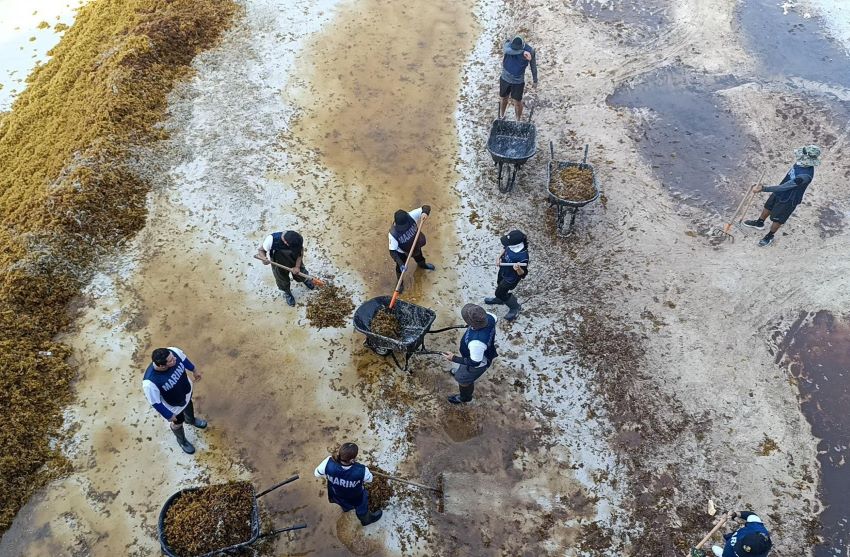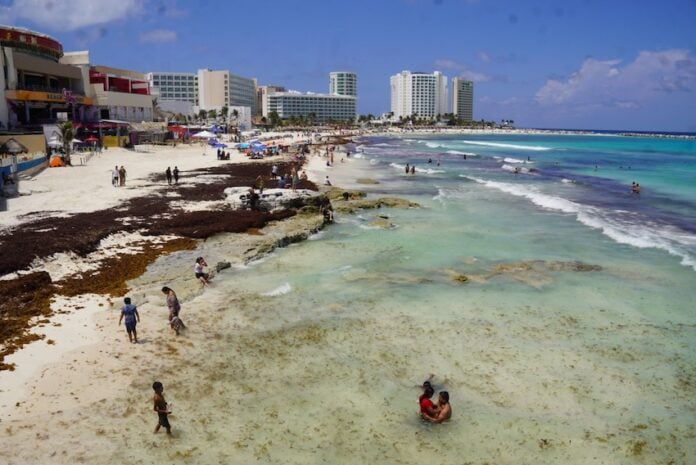Just as experts thought Mexico’s 2025 sargassum season was over, the seaweed came back with a vengeance, covering beaches in Cancún once again, local authorities reported on Monday.
Seaweed washed up mainly between kilometers 1 and 3 of Cancún’s Hotel Zone, as well as on Playa del Niño in Puerto Juárez, according to the director of municipal public services, José Antonio de la Torre. The problem seemed limited to those areas, and municipal crews kept watch on other beaches in the city to prevent the further spread of the sargassum.

The late wash-up took authorities by surprise because experts had announced a likely end to Mexico’s sargassum season in October, as colder weather was expected to lower sea temperatures and prevent seaweed arrivals.
“The currents are changing … moving north, the southeasterly winds have decreased and there’s very little sargassum in the sea now,” Esteban Amaro, director of the Quintana Roo Sargassum Monitoring System, said in early October. “Arrivals have dropped significantly in the past two weeks, suggesting the season is almost over.”
Nature, however, had other ideas.
Though cooler temperatures were expected to help, the arrival of polar air, along with northerly wind and high waves, created conditions for more seaweed to wash up along the Mexican coast.
The experts may have been surprised but the clean-up crews seemed well-prepared. They used light machinery and trucks to transport the sargassum to the authorized site for final disposal.
Coordination with hotel owners made it possible to carry out cleanup efforts quickly and effectively during off-peak hours, allowing tourists and locals to use the beaches without major sensory or health issues.
“The cleanup operation began in the early morning to prevent accumulations and unpleasant odors in recreational areas and hotels,” stated De la Torre
The municipality is now expected to close the season with over 16,500 tons of sargassum collected, far higher than the 2024 level of 3,000 tons, De la Torre reported. The increase has been attributed to climate variations and changes in ocean currents.
With reports from Reportur
